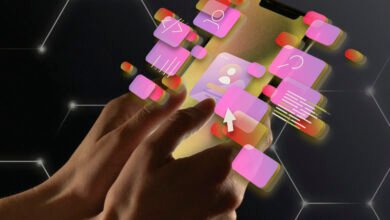Classroom-20x Explained: What It Is and Why It Matters in 2025

The education landscape is undergoing a massive shift, and at the heart of this evolution lies a groundbreaking concept classroom-20x. As schools and educators look for smarter, more inclusive, and technology-driven methods of teaching, classroom-20x offers a futuristic solution that combines innovation with real-world practicality. Whether you’re a teacher, student, or policymaker, understanding the potential of this model is essential for staying ahead in the world of learning.
What is Classroom-20x?
Classroom-20x is a forward-thinking educational model that leverages digital tools, smart systems, and adaptive learning environments to deliver high-quality, personalized education. Unlike traditional classrooms, where teaching often follows a fixed curriculum and pace, classroom-20x emphasizes flexibility, accessibility, and student-centric learning.
From AI tutors and virtual whiteboards to cloud-based platforms and real-time feedback, classroom-20x is designed to meet the demands of today’s digital learners and educators.
Core Elements of the Classroom-20x Approach
1. Technology-Enhanced Learning
At the center of classroom-20x is technology integration. Smartboards, learning apps, artificial intelligence, and virtual reality all play a role in making lessons more interactive and easier to understand. These tools allow educators to present complex concepts through simulations, animations, and real-time collaboration.
2. Personalized Instruction
Classroom-20x is built on the idea that no two students learn the same way. Using data analytics and AI, educational platforms can assess student performance and provide individualized lesson plans. This ensures that students receive support where they need it and can progress at their own pace.
3. Collaborative Learning Environment
Unlike traditional classrooms, which often focus on solo learning, classroom-20x encourages teamwork and collaboration. Cloud-based platforms like Microsoft Teams and Google Classroom make it easier for students to work on projects, share ideas, and communicate with teachers — both inside and outside the classroom.
4. Remote and Hybrid Learning Capabilities
Another advantage of classroom-20x is its remote learning support. Whether students are in rural areas or facing unforeseen disruptions like pandemics, this model ensures that learning continues through secure digital channels and cloud-based storage.
Why Classroom-20x is Gaining Popularity
Increases Student Engagement
One of the biggest challenges in education is keeping students engaged. Classroom-20x tackles this with gamified learning, live polls, quizzes, and interactive media. These elements turn passive learners into active participants.
Supports All Learning Styles
Whether a student is a visual learner or prefers auditory instruction, classroom-20x accommodates a variety of learning preferences by offering diverse content formats such as videos, podcasts, infographics, and interactive exercises.
Empowers Teachers
With automated grading, lesson tracking, and instant feedback systems, teachers in a classroom-20x setup can focus more on creative instruction and one-on-one student support, rather than spending hours on administrative tasks.
Challenges and Considerations
While classroom-20x presents many advantages, it also comes with challenges that need careful planning.
1. Digital Divide
Not all students have equal access to devices and stable internet connections. Bridging this digital gap is critical for the success of the classroom-20x model.
2. Training and Development
Teachers and staff must be equipped with the right skills to navigate this new environment. This means ongoing professional development and technical training are necessary for effective implementation.
3. Cost and Infrastructure
Building a classroom-20x environment requires investment in infrastructure, tools, and training. For some institutions, especially in low-income regions, these costs can be a major hurdle.
4. Data Security
With so much reliance on online platforms, student data privacy becomes a significant concern. Schools must implement strong security policies and comply with regulations like FERPA and GDPR.
How Schools Can Implement Classroom-20x
To successfully adopt the classroom model, schools can follow a phased approach:
-
Conduct Needs Assessment: Understand what students and teachers require for a digital transformation.
-
Choose Scalable Tools: Use flexible platforms that can grow with the institution’s needs.
-
Train the Educators: Provide in-depth training on new technologies and teaching methods.
-
Engage Stakeholders: Involve parents, students, and the community in the decision-making process.
-
Monitor and Adapt: Continuously review what’s working and adjust the system for better results.
Real-World Tools Supporting Classroom-20x
To bring classroom-20x to life, schools can leverage several educational technologies:
-
Google Workspace for Education – Collaboration and document sharing
-
Khan Academy – Personalized learning resources
-
Zoom – Virtual class sessions
-
Edmodo – Social learning and class communication
-
Flipgrid – Student expression through video
These platforms help make classroom-20x not only effective but also accessible for learners of all ages.
Classroom-20x vs Traditional Learning: A Quick Comparison
| Feature | Traditional Classrooms | Classroom-20x |
|---|---|---|
| Content Delivery | One-size-fits-all | Personalized and dynamic |
| Accessibility | In-person only | In-person and online |
| Tools Used | Books, blackboards | VR, AI, cloud platforms |
| Pace of Learning | Fixed pace | Self-paced, adaptive |
| Teacher’s Role | Primary instructor | Guide and facilitator |
The contrast clearly shows why many institutions are making the shift to classroom-20x as part of their long-term education strategy.
Future Outlook of Classroom
As artificial intelligence, machine learning, and smart devices continue to evolve, so will the classroom model. In the near future, we may see classrooms equipped with AI mentors, holographic teaching assistants, and emotion-aware software that adapts lessons based on student mood and behavior.
Moreover, classroom-20x is expected to contribute significantly to global education equality, making learning resources accessible to remote, underprivileged, and differently-abled students.
Conclusion
Classroom is more than just a concept; it’s a blueprint for the future of education. By integrating technology, promoting inclusivity, and offering personalized learning experiences, it prepares students for a world where adaptability and digital skills are essential.
As the education system continues to evolve, institutions that embrace the classroom model will be better equipped to meet the challenges of tomorrow while delivering meaningful, effective education today.



